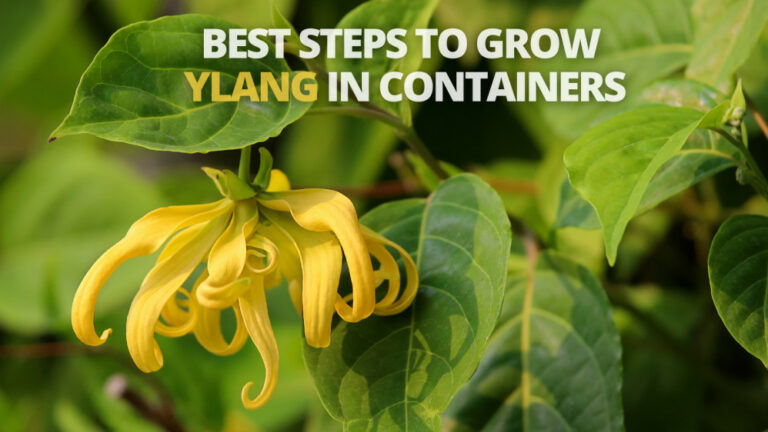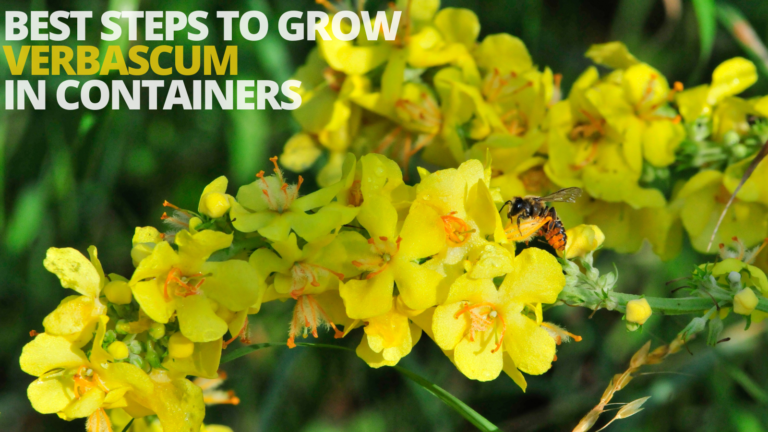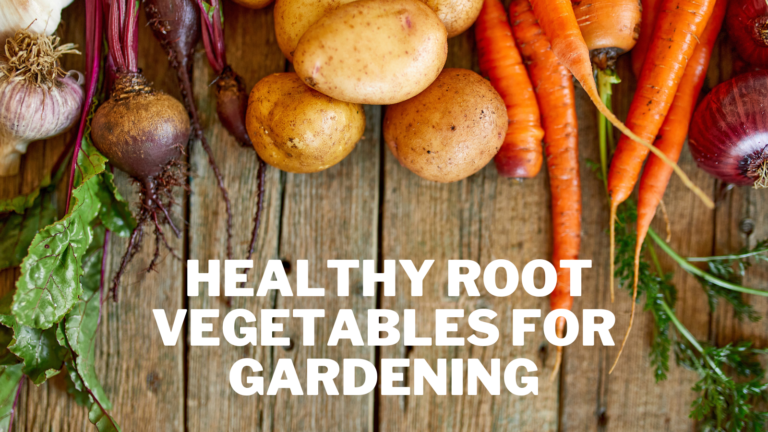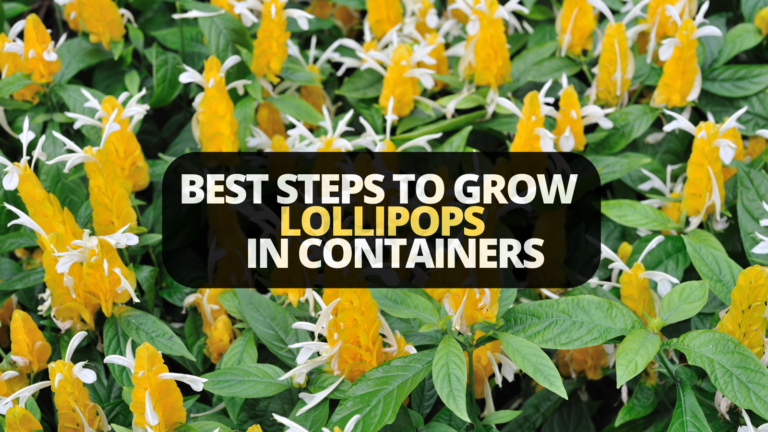Best Steps To Grow Squash In Containers
Best Steps To Grow Squash In Containers
You can grow cultivars of cucumbers, peppers, peas, tomatoes, squash, leafy vegetables, and a lot more in pots.
Contrary to popular belief, these plants will produce just as much fruit in a container as in the ground if you choose the suitable variety and take good care of the plants.
In this blog, I’ll share how to grow squash in containers.
History & Origin Of Squash
The first recorded mention of squash in the Old World is from 1591, but it wasn't until the latter half of the 16th century that it became popular in Europe.
But squash was highly prized and widely grown by native Americans long before it became popular in the Old World.
The first domestication of the Cucurbita species is believed to have occurred around 8,000 years ago, roughly 4,000 years before maize, the principal ancient crop we associate with the Americas (corn).
Fast germination, early flowering, quick growth, and storable seeds are some benefits of squash that may have aided in its early domestication by making it easier for early Native Americans to cultivate.
Early explorers and colonists brought squash seeds back to the New World and quickly gained popularity.
Due to its ease of interspecies hybridization, squash swiftly gained popularity among horticulturists as early colonists and explorers sent squash seeds back to the new country.
The 20 chromosomes found in Cucurbita species are not genetically isolated. Breeders might thus easily select particular genetic traits across species.
The numerous squash varieties we are familiar with today result from significant breeding, study, the discovery of new species, and further scientific taxonomy of the genus by the 1800s. Squashes can often be divided into two types based on when they are harvested.
Winter squash is a term that describes later-growing, unusual-shaped squash with long-lasting properties, frequently with brittle or warty skin (C. maxima and C. moschata).
Summer squash is the smaller, faster-growing variety typically consumed before the rinds and seeds fully develop (C. pepo).
Types Of Squash
The next squash season offers countless options for soups, pies, side dishes, casseroles, and other foods.
You've seen various squash at your neighbourhood farmers market or grocery store, from yellow squash to butternut squash to kabocha squash.
In actuality, there are more than 100 different varieties of squash that are divided into summer and winter variants.
Ideally, you should know the best varieties to grow squash in containers.
1. Zucchini Squash
This well-known squash has been cultivated for centuries due to its simplicity and excellent yields. You may grill, sauté, and serve it with spaghetti or bake it into muffins and cakes.
If you have more zucchini than you can use in your dishes, grate it in your food processor, freeze it, defrost it, wring the moisture out, and use it to create a frittata or quick bread later.
2. Butternut Squash
This squash typically has a bulbous shape and a tan exterior colour. This winter squash is a well-liked choice for cold-weather dishes like soups, risotto, or gnocchi due to its traditional sweet flavour and rich texture.
It can also be quickly baked or sautéed to bring out its distinctive flavour, making it incredibly versatile.
3. Round Zucchini
These adorable round zucchini are suitable for the same meals, but it's pleasant to roast or grill them whole when they're small. Or, harvest them at a larger size and stuff them with rice, meat, and vegetables.
4. Spaghetti Squash
Spaghetti squash, perhaps the most popular variety, has shredded flesh that, you guessed it, tastes like spaghetti.
Because of this, it is frequently used as a low-carb, healthy alternative to pasta. As a result of its spacious interior, it's also ideal for stuffing.
5. Acorn Squash
The acorn squash has a similar shape to its namesake and is green on the outside with orange-yellow flesh.
It is excellent for roasting or stuffing and has a mild flavour. For the ideal baked acorn squash, scoop out the seeds and glaze the interior flesh with syrup or brown butter.
6. Kabocha Squash
This Japanese squash has orange flesh, a green rind, and a squatty shape. It is suitable for mashing and baking due to its dense flesh and sweet flavour.
It is mainly grown and consumed in Japan, South Korea, Thailand, and the United States. It is also frequently used in soups.
7. Banana Squash
The cylinder-shaped banana squash has a mild pinkish-orange colour. Although they are always accessible, the fall and winter are when they are in season.
They have a maximum length of 3 feet. Before eating or cooking, the thick skin is removed; just the flesh is edible.
8. Tatume Squash
These heirloom plants that tolerate heat grow quickly. This vine is suitable for large gardens because it may grow as long as 10 feet!
The firm, sweet white flesh is more flavorful than many other summer squash varieties. When fruit is the size of a softball, pick it.
9. Delicata Squash
An heirloom variety called Delicata has a rind with stripes of cream and green. This squash's oblong shape and sweet potato-like flavour make it very tender. Due to its thinness, delicata squash skin is edible.
This is one of the easier varieties of squash to prepare because you don't have to peel the skin before cooking. The sweet flavours emerge when it is roasted and cut into pieces.
They taste great when baked or stuffed; the seeds can be roasted for a salty fall treat.
10. Honeynut Squash
Indeed, honey nut squash is precisely what it appears to be—a little butternut squash. It originated from butternut squash seeds and recently gained popularity in the kitchen.
As a result of the greater concentration in the smaller size, it has a more profound and sweeter flavour.
11. Cousa Squash
Even though these oval-shaped Middle Eastern varieties of summer squash may have the best flavour, finding them might be challenging unless you cultivate them yourself. You can steam, saute, or stuff them.
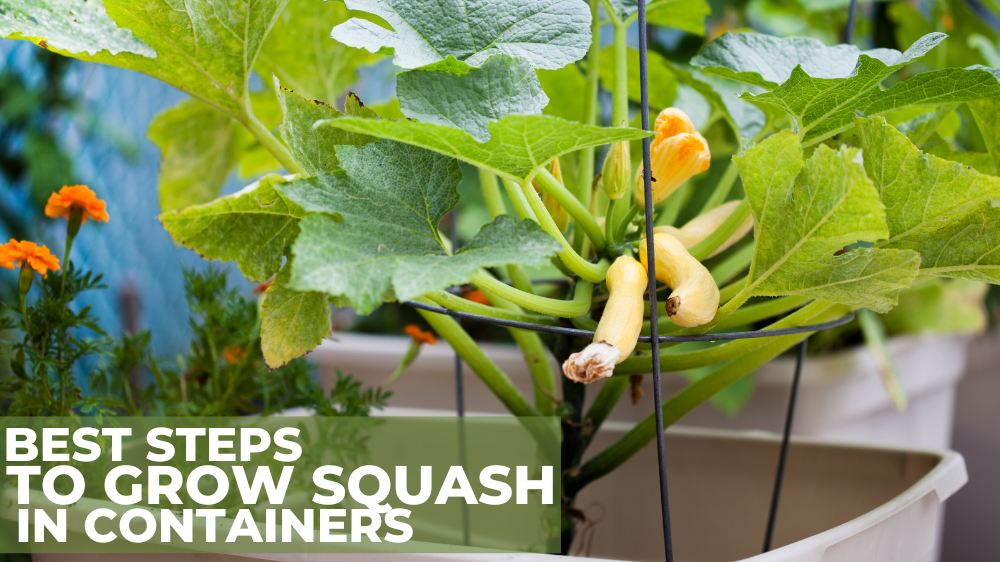
Grow Squash In Containers
Squash plants are the stars of every vegetable garden and a prolific annual wonder. Beyond the fact that they yield a lot of fruit, one of the best things about growing squash is the number of kinds available.
Squash comes in various colours, sizes, flavours, and forms, which gives the vegetable garden a delightful variety, but they frequently occupy a lot of space.
So, think about cultivating squash in pots. Even gardeners with limited areas can enjoy this abundant fruit output by growing squash in pots and containers.
Squash plants thrive in containers and pots because you can manage the soil quality for these heavy feeders and prevent pests from damaging plants.
Check out this advice to start growing squash in containers successfully.
1. Choose The Right Container To Grow Squash
When growing squash in containers, choosing the proper container is vital. The diameter of a squash plant can range from 34 to 50 inches, depending on the cultivar.
The container must be at least 25 inches in diameter at the top and 24 inches deep. Squash is grown in clay pots, polypropylene containers, plastic containers, wooden crates, recycling bins, etc.
There should be at least two to three draining holes in the container. The squash plant requires a reliable drainage system.
After thoroughly drying them off, wash the pots with mild soap. To stop dirt and water from dripping into the container, fill the bottom of the pots with a layer of small stones or gravel.
2. Soil To Grow Squash In Containers
Rich in organic matter and loose, well-draining soil is ideal. The soil's pH should range from 6.0 to 6.5. You can use store-bought soil mixtures or make your own to promote healthy growth as potting soil.
Mix equal volumes of perlite, sphagnum, potting mix, peat moss, organic or natural compost, and soil in a container to grow squash. The squash plant will develop faster by adding natural fertilizers like fish or worm casting.
How To Start Growing
Squash may be grown effectively in pots and containers with the right care and growth conditions.
Some robust climbers can grow on trellises in a vertical vegetable garden or be let to spill over their pots and space-saving bush kinds.
- Pick a container with holes for drainage.
- Ensure you have a great, sizable pot or growing container filled with rich potting soil, and water it frequently.
- Providing a trellis will allow you to grow vine plants vertically.
- If you want a more compact habit, plant a shrub type.
- If there is room for them to spread, let the plants spill out of the container.
- Your garden in pots and containers and the quality of your plants and seeds are best under your supervision.
- Your plants and seeds will stay warmer earlier in the season in containers and pots than they would if they were planted in the ground, and you can better regulate the soil quality of your garden this way.
Planting Squash
Sowing seeds directly into the pot or container is recommended because squash roots do not like to be moved.
After the soil has warmed up and around two weeks after the threat of frost, sow seeds in the middle of the spring.
If you want to start planting earlier, consider doing so 3–4 weeks before the last frost by starting your seeds indoors in biodegradable pots.
Using biodegradable pots lets you plant the entire container directly into the ground, preserving the roots.
Light & Temperature
Put your squash pots and containers in your garden or yard with full sun.
Locate a sunny area in your yard that will get at least 6 to 8 hours of direct sunshine daily for the best growth.
Warm temperatures, especially in the mid-70s or above, are optimal for squash plants' growth.
Before seeds are sown, the soil temperature must be warmed to at least 60° Fahrenheit; otherwise, the seeds won't be able to get off to a good start with germination. Plants may have stunted or delayed growth if temperatures are too low.
Watering
One inch of water should be applied to squash plants weekly. Providing plants with enough water is crucial, especially throughout the budding and fruiting stages.
When growing squash in containers and pots, you can increase water retention in your garden by adding 2-3 inches of organic mulch around the base of established plants.
To prevent fungus, water the soil rather than the plant.
Watering early in the day gives the plant plenty of time for the sun to dry its foliage and the best opportunity of hydrating before the sun gets too hot.
Fertilizing
Around six weeks after the seeds are planted, squash plants grown in containers draw their nutrients from the earth and can benefit from fertilization.
The best way to encourage fruit production and protect against diseases like blossom rot when growing squash in containers or pots is to amend the soil surrounding squash plants with worm castings, well-decomposed compost, or a high phosphorus and calcium fertilizer.
Mulching
If you are growing squash from seeds, once the plants are 2 inches tall, cover them with a thin layer of mulch to keep the plant's moisture levels stable and to prevent weed growth.
If you are starting with a seedling, cover the young roots with a layer of mulch after transplanting the seedling.
Pests & Diseases Of Squash
Growing squash in pots and containers is simple, but you may run into pests and diseases along the road.
By ensuring your soil is rich in organic matter, and your plants have sufficient air circulation, you can naturally prevent disease and control pests by giving them the right amount of water.
Maintaining a close check on your plants and taking action if you see any damage due to any pests or diseases is essential.
Cucumber Beetles And Squash Vine Borers
The squash and zucchini plant's worst enemies are cucumber beetles and squash vine borers.
Keep a vigilant eye out for apparent pests and vine damage. They may destroy your vines if they can dig through them.
Blossom Rot
By making sure the soil is calcium-rich, blossom rot can be avoided. You can test your soil and make the necessary amendments.
Powdery Mildew
If not identified and treated promptly, powdery mildew on plants can spread swiftly and obliterate the garden.
In most cases, it may be avoided by maintaining optimum space between plants, which promotes enough airflow, and by watering early in the morning, which prevents leaves from being overly soaked for long periods.
Harvesting Squash
Lastly, here is some advice on growing summer squash. The same plant produces both male and female flowers, but only the female flowers bear fruit.
Make sure you only consume the male flowers if you want to avoid interfering with fruit production. The blossoms have a mild squash flavour and provide a lovely colour to a summer salad.
The unique squash-shaped protrusion that the female flowers' stalks have makes it easy to distinguish between male and female blossoms.
Leaving the fruit on the vine will tell the plant to cease producing if you find yourself swamped by it, as zucchini is infamous for doing. In light of this, if you want more fruit, ensure you routinely collect it so the vines don't reduce or stop producing fruit.
The flavour of summer squash increases in size! That is all there is to know about growing summer squash successfully in containers.
Visit one of our sites and check out the variety of summer squash plants we have for sale. We're pleased to assist you in choosing the best squash containers and answer any queries you may have.
How To Store Squash
If you can lower the respiration rate, the squash will last longer. The temperature can be lowered to do this.
The period for preserving winter squash rises with every 18-degree drop in temperature.
The ideal temperature range for most squash is between 50 and 55°F (10-13°C). Proper ventilation is a crucial component of squash care. It keeps the storage area's temperatures and humidity constant while preventing decay.
Winter squash is a beautiful way to include fresh produce in your diet throughout the colder months. Each variety of fruit has a different shelf life.
Acorn squash will remain fresh for five to eight weeks. The shelf life of butternut squash is two to three months. If properly stored and hardened off, hubbard squash can last for up to six months.
Dry Storage Of Squash
Winter squash can be kept in a dry environment for up to 6 months depending on the variety.
They won't last as long in environments with higher humidity than the typical kitchen or in colder climates.
If you don't want to spend more money on canning, fermenting, and preserving them, store them this way.
Refrigeration Of Squash
The refrigerator is unsuitable for long-term storage because whole squash is best kept in an area with sufficient air circulation at room temperature.
However, cooked or pureed winter squash lasts 3 to 5 days in the refrigerator when stored in an airtight container or resealable plastic bag.
This is not a viable option for long-term storage, but it's a terrific way to use the squash several times in one meal.
Conclusion
Besides being a good source of antioxidants, potassium, magnesium, and manganese, squash is also a good source of vitamins A, C, and B.
They are also naturally high in fibre and water because they are whole plant foods, which makes them hydrating and healthy for the digestive system. So don’t miss adding a healthy vegetable to your small garden.
I trust you enjoyed this article on the Best Steps To Grow Squash In Containers. Please stay tuned for more blog posts to come shortly. Take care!
JeannetteZ
>>>Please click here to read my all-inclusive article about Container Gardening<<<
>>>Are you interested in homegrown herbs and medicine? Please click here to find out more about it!<<<
Your Opinion Is Important To Me
Do you have thoughts, ideas, or questions? I would love to hear from you. Please leave me your questions, experience, and remarks about this article on the Best Steps To Grow Squash In Containers in the comments section below. You can also email me at Jeannette@Close-To-Nature.org.
Disclosure
This post may contain affiliate links. As an Amazon Associate and other affiliate programs, I earn from qualifying purchases at no extra cost to you. Read my full affiliate disclosure.
You might also enjoy these blog posts:
Best Steps To Grow Camelia In Containers
Best Steps To Grow Gayfeather In Containers
Best Steps To Grow Yarrow In Containers
Best Steps To Grow Conebushes In Containers
Best Steps To Grow Curry Plants In Containers



























